Spot on
on May 22, 2019Stripes and spots are more prominent on some animals than others and are the result of a genetically determined pattern created by melanocytes that produce dark and light pigments, providing evolutionary superiority in the form of camouflage. Concealed within their habitat and able to identify one another due to distinguishing marks, akin to the fingerprints of humans, these animals also make use of unique signals to navigate the rigours of the bushveld.
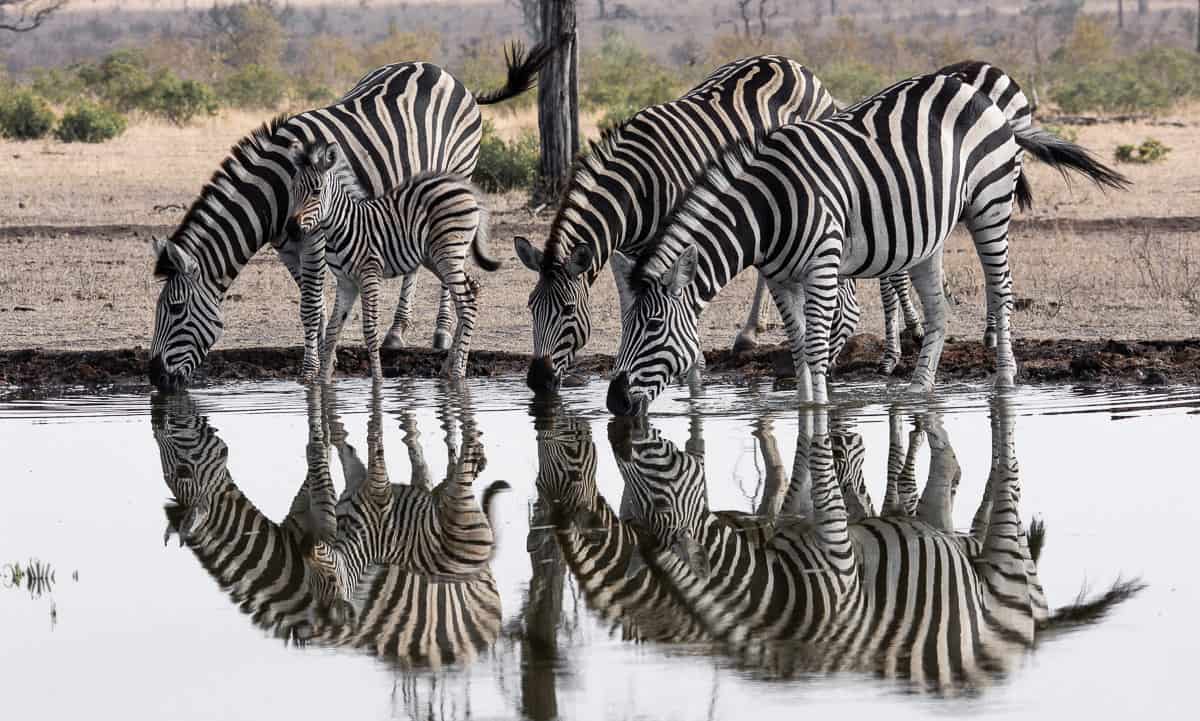
A great mystery in the Animal Kingdom is the bold zebra coat of white and black stripes which stand in shrill contrast to the muted colours of the savannah surroundings. When a herd of zebra moves in unison, a dazzling motion of stripes and fluctuating dark and light gestures make it difficult for predators to isolate an individual from the herd, especially their main predator, lion, who is colour blind. Zebra foals are born with brown and white stripes, immediate mobility and elongated legs that create the illusion of their bellies being almost as high as their mother’s, making them less of an easy target. Upon sensing the presence of a predator, zebras bark and snort, alerting the rest of the herd of imminent danger.
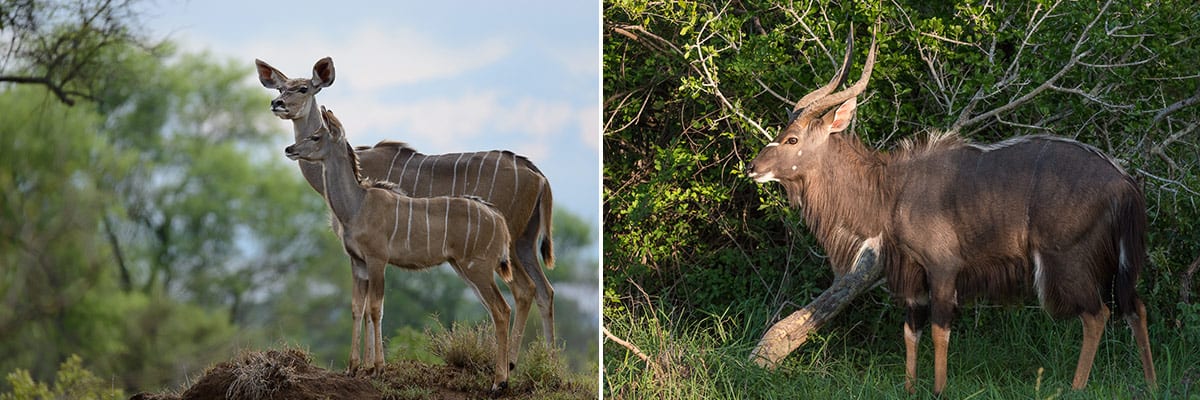
Kudus, nyalas and bushbuck are antelope adorned with stripes and spots. Cryptic colouring and markings help them camouflage and when standing dead still, are very difficult to spot. Vertical stripes, facial spots and spots on their bellies, thighs and flanks, assist these agile antelope in blending in between leaves, trees and shrubs. Kudus curl their tails up over their backs, exposing the white underside as an alarm signal and marker for the rest of the herd to follow in times of threat.
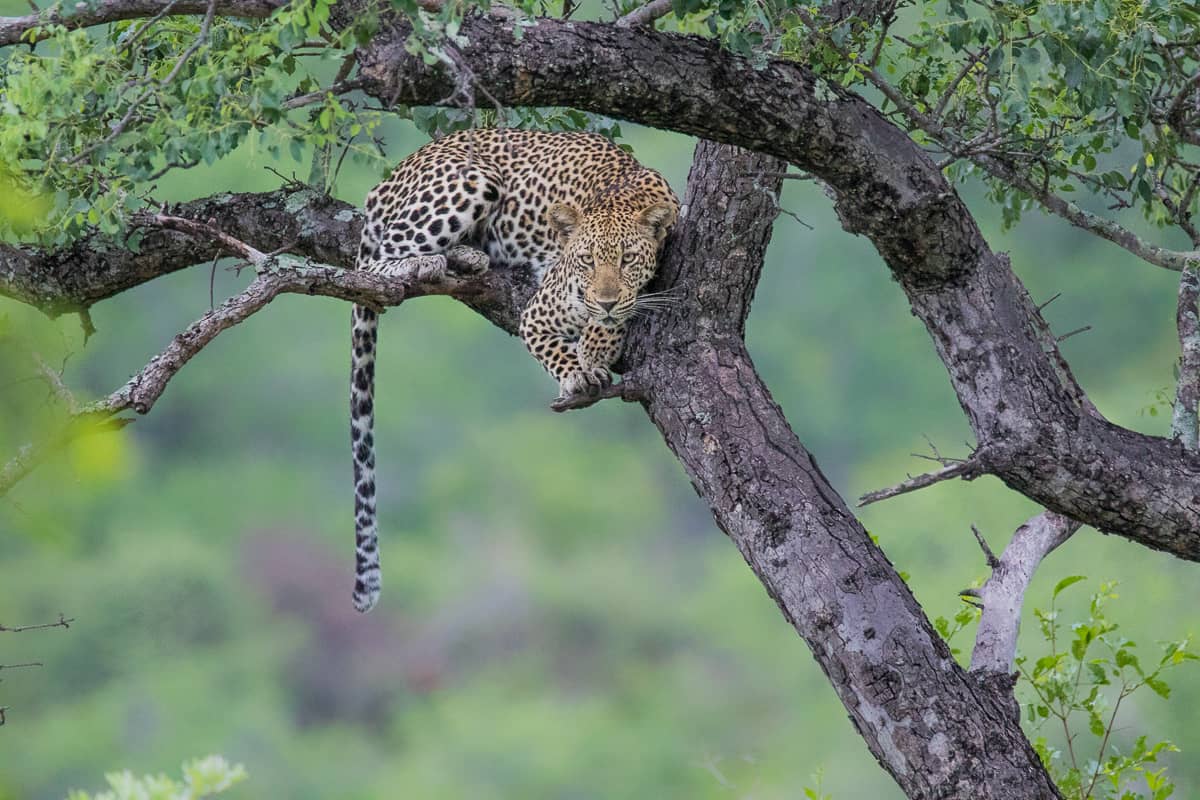
Another inhabitant of the bush that uses tell-tale signs by flipping its tail, is the leopard. Signalling that they are off-duty, leopards curl their tails, exposing the white underside to set other animals at ease as they pass by. The flicking of the prominent white tip of the tail is used as an indicator for cubs to follow their mother through long grass. When stalking their next meal, leopards need to fully merge with their surroundings and their contrasted colouration of black rosette spots on a tawny-coloured coat breaks up their visual outline, allowing them to get very close to prey.
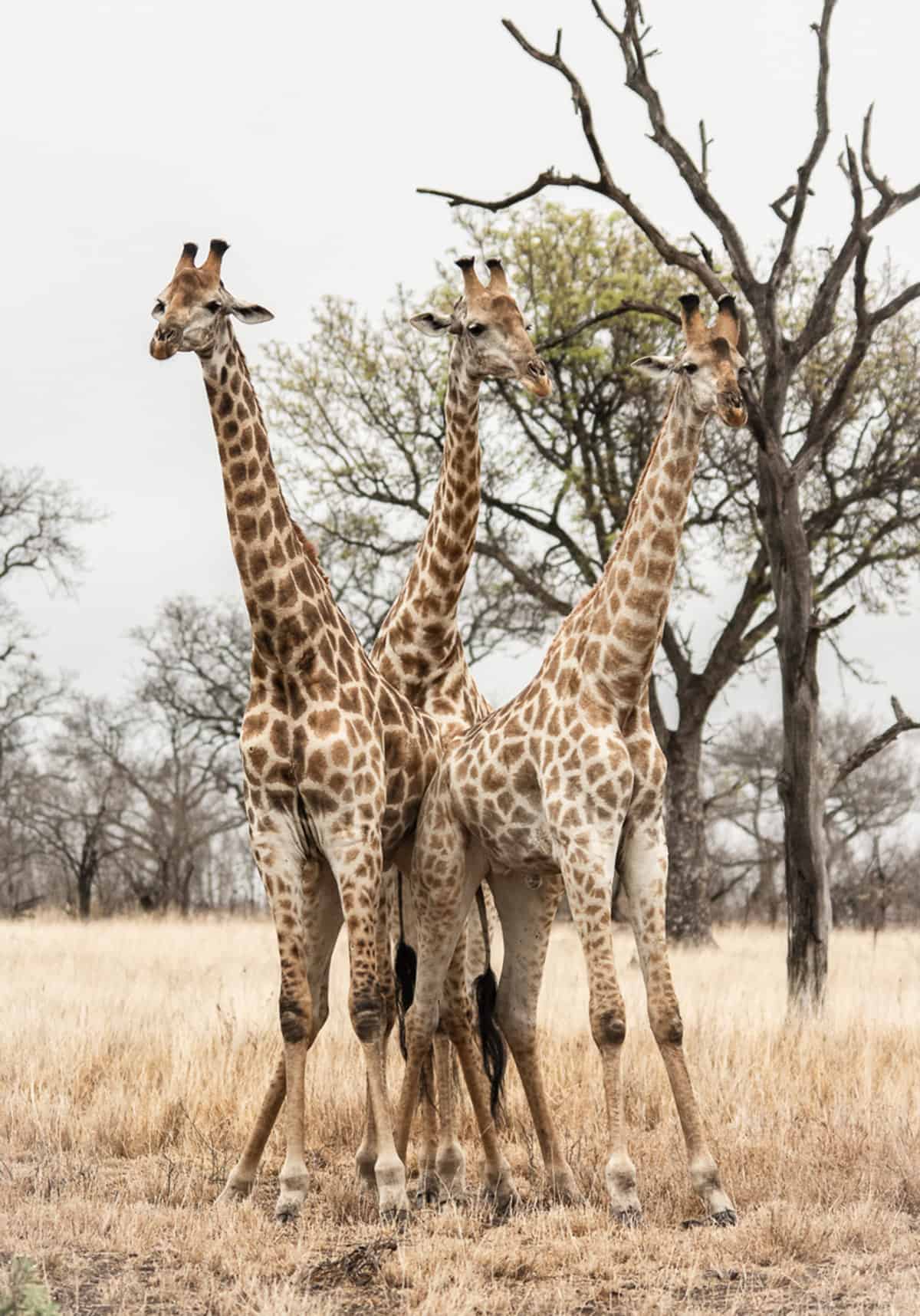
The world’s tallest land animal relies on its mottled patterns to match dappled shadows and sunlight under canopies of trees. The polygon shaped patches on the hide of the giraffe are brown in colour and unique to each animal. Their intimidating size and kicking abilities protect adult giraffes from predators, their calves are however at risk and require the extra protection of their camouflage. Giraffes are known to be non-vocal and produce whistling sounds to communicate with their young. They also harmoniously hum to one another during night time.
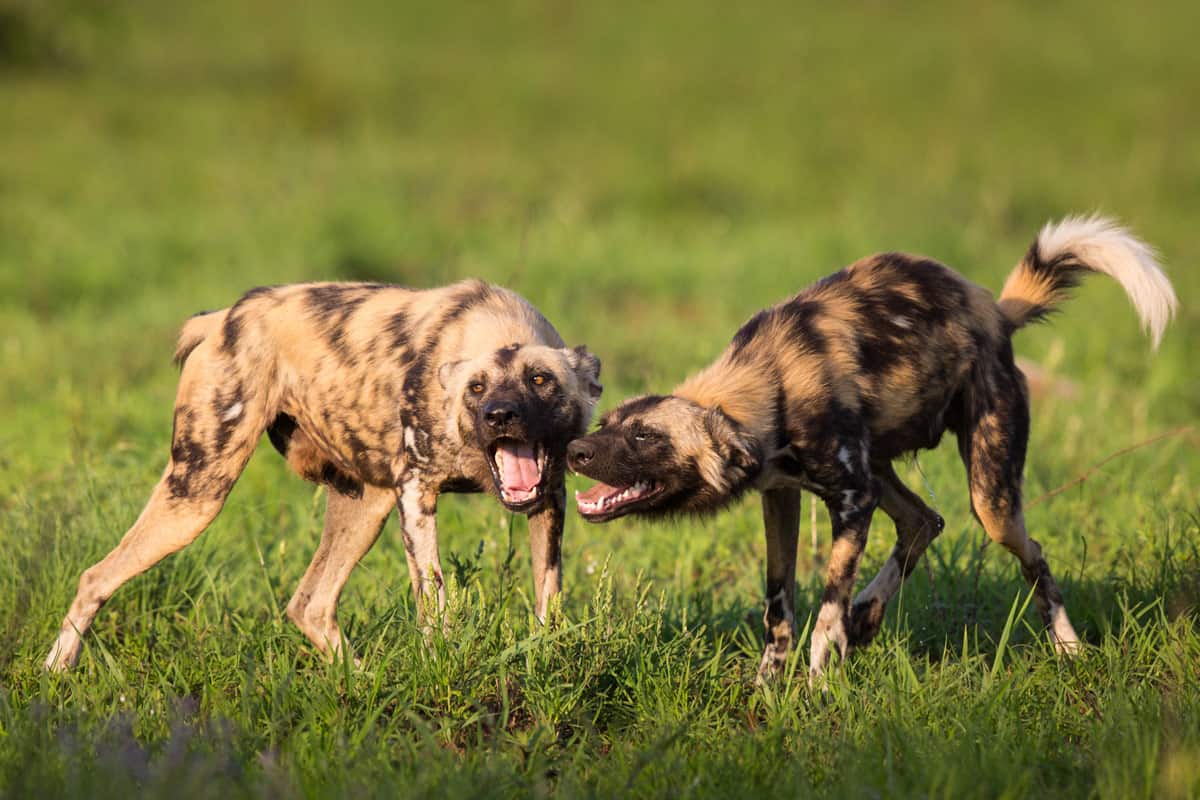
The African wild dog, also called the ‘painted wolf’ because of its uniquely spotted coat, blends in perfectly with its surroundings. Signals used amongst the pack consist of barking, high pitched twittering, howling and tail wagging. Wild dogs sneeze to vote on hunting decisions, and when there is enough sneezing at a pack gathering, these opportunistic predators set off on a deadly endurance race with their prey.
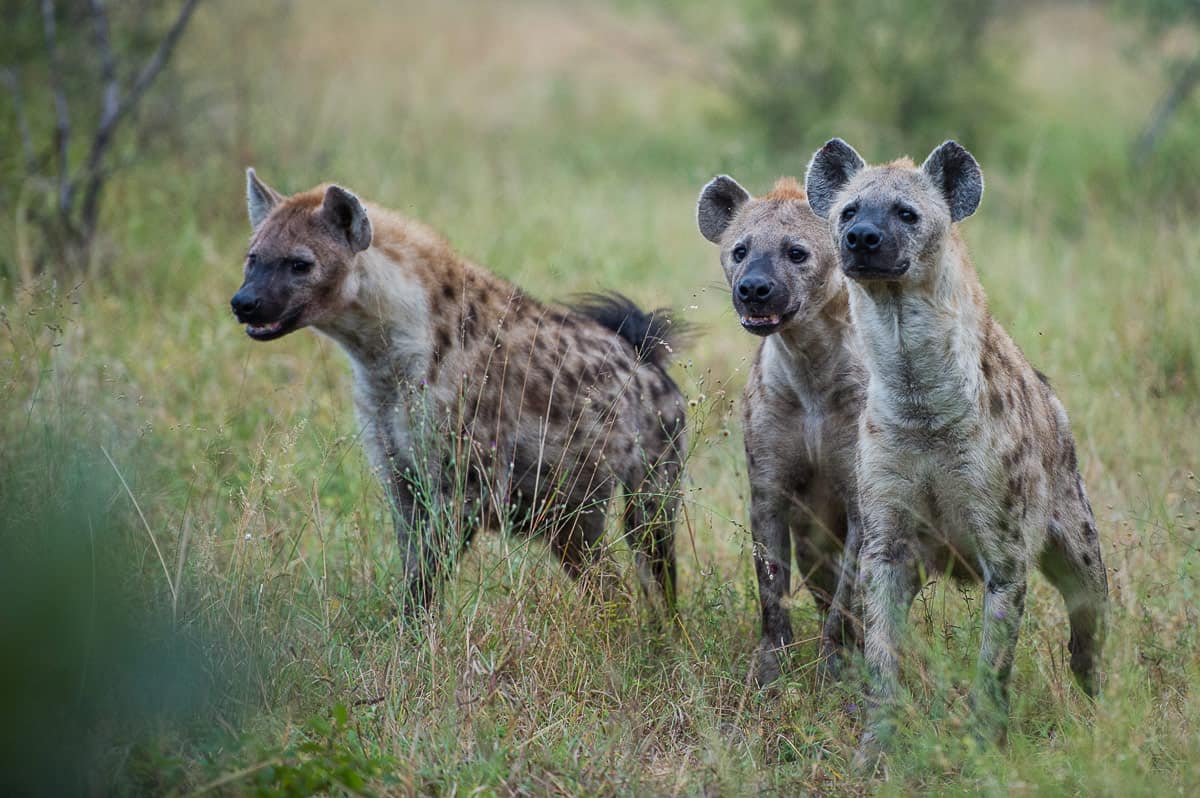
One of the most eerie calls in the bush is the tittering of a cackle of Spotted hyenas, resembling a human laughing hysterically. Their speckled coats merge seamlessly with the grassland, providing advantage to this formidable hunter as it finds its next victim, announcing this through macabre sounds to the rest of the clan.
The beauty of each of these species is more than just that – their uniqueness is a form of protection and recognition that give them a slight advantage to ultimately survive and thrive in the bush.






